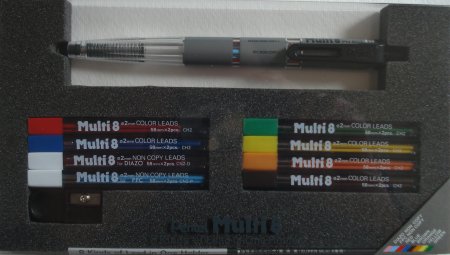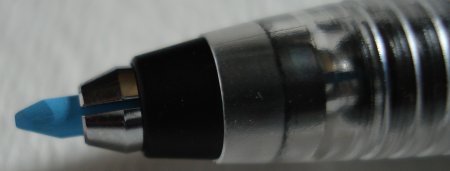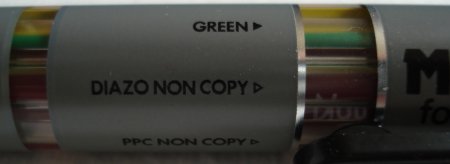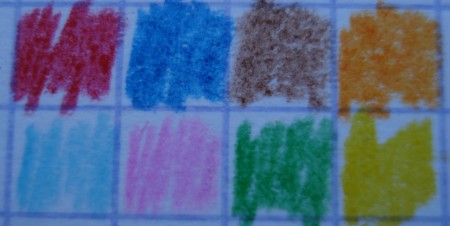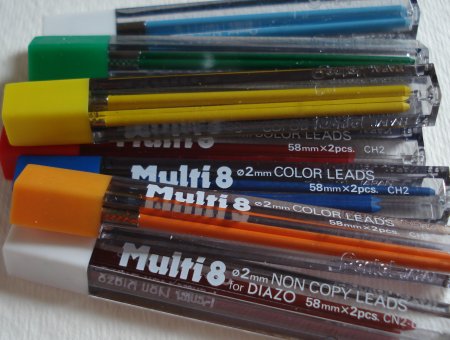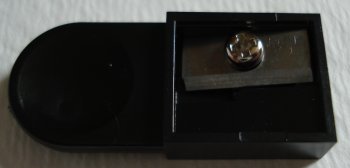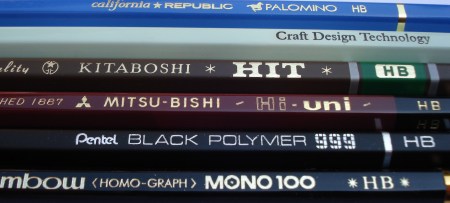
One of pencil talk‘s most popular subjects has been Japanese pencils. Made to extremely high standards, these pencils are the preferred working tools of many artists, drafters, and other professionals around the globe. Thanks to the world wide web, it’s now possible for those of us outside Japan to acquire these first rate writing implements.
In this review, we will compare and contrast the HB versions of six Japanese pencils:
California Republic Palomino
Craft Design Technology item 17
Kita Boshi Hit No. 9900
Mitsubishi Hi-uni
Pentel Black Polymer 999
Tombow Mono 100
We will look at appearance, grip, sharpening, erasure, fastness, and writing capabilities, and attempt an overall assessment by assigning points in each category to the pencils.
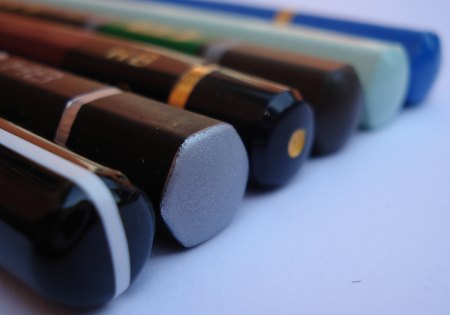
The pencils.
1. The California Republic Palomino is made in Japan for California Cedar Products. Introduced in 2005 and sold primarily through an eBay store, the manufacturer is unknown.
CalCedar states that they are “the world’s leading supplier of wooden slats for the production of wood-cased pencils.” So they are a supplier to the pencil industry, and may very well have provided the wood used in all six of these pencils.
The product home page is here.
2. item 17 is the highly generic name used by Craft Design Technology. The pencil is made by Pentel for CDT, and is part of a large line of office supplies provided by a number of manufacturers, including Pentel, Sun-Star, Lion, Sanwa, Yamato, Zeba, and Takeo. Tyler Brule is among their creative team.
CDT has a website here. Note: the website uses extensive flash animation, window resizing, and popups.
3. The Hit 9900 is made by Kita Boshi. Though they specialize in children’s pencils, the Hit is a first rate pencil, and worthy of inclusion in this list.
Kita Boshi have a website here. Take a look at their interesting headquarters building, which they call “Pencil House”.
4. The Mitsubishi Hi-uni is made by the Mitsubishi Pencil Company – no relation to the Mitsubishi Motor Company. They were established in 1887, and trade on the Tokyo Stock Exchange. The Hi Uni, along with the Mono 100, has long been considered to be at the pinnacle of pencil making. Of course, our challenge today is to see if this reputation is deserved.
Product page here.
5. The Black Polymer 999 is make by Pentel. A heavyweight in the mechanical pencil world, I cannot find too much online about their woodcase manufacturing operations. The continued availability of this pencil, and their production of CDT’s pencil, indicate that Pentel is still active in this area.
6. The Mono 100 is the offering from Tombow. It has many adherents in the animation field who feel it is the world’s best pencil. Tombow was founded in 1913, and launched the Mono 100 in 1967.
Tombow’s website includes a lot of English language content for those of us who don’t speak Japanese, and includes some interesting print and television ads for their local market.
Here is their pencil page.
There are other pencils I wish could be added to this review – The Pentel 999? (999 alpha) was Pentel’s premiere offering, but appears to have been withdrawn from the market. I haven’t been able to locate any. The Colleen Pencil Company folded a few years earlier, but was greatly admired for their quality. More information is available at this site devoted to Colleen pencils. The Japanese pencil industry website also lists other manufacturers, but most appear to be in the novelty market.
Appearance (20 points)
We’ll evaluate the pencils themselves, but I thought I’d start by mentioning the packaging. The Mono 100 and Hi-uni come in sturdy, reusable cases that will actually protect the pencils. If you’ve never seen these, they are an immense surprise. The CDT and Pentel pencils come in standard but attractive pencil-matching cardboard boxes. The Hit 9900 comes in a generic unlabeled white cardboard box. The Palomino used to ship in a plastic box of six, though it now also has a wooden box option, and possibly others.
I will cut right to the verdict here – the opinion of everyone who has seen these pencils (including myself) is that the CDT pencil is an immediate standout – clear, clean design with minimal black text, and a fantastic original choice of colour.
Next to the CDT pencil, I give a nod to the Palomino, again for clear, clean design with minimal text. It gets second because the colour (it comes in both blue and red-orange) isn’t quite as original as the CDT pencil, nor is the gold colour text. It also has a painted ring, which emulates the embedded gold colour rings of the Mono 100 and Hi-Uni. However, I think it is a distraction, and the paint wears off over time.
All six pencils are made to very high standards – rich, highly finished deep varnishes, with no paint spilling over the unfinished end.
Bar codes may be a business necessity, but the Palomino, item 17, and Hit 9900 pencils avoid them – perhaps because they aren’t available as open stock at retail. Regular readers of the blog know that we don’t like bar codes on pencils. They interfere with the pencil’s look, and the impression on the pencil casing can interfere with the grip.
The Hi-uni and Mono 100 have an additional distinguishing feature – signature caps. In each case, a gold colour ring (I’m not sure of the material) is embedded near the crown. The Mono 100 has a white stripe traversing the cap, and the Hi-Uni has an embedded yellow dot in the cap. I do think this pride in the product is great.
The Hit 9900 and High Polymer 999 are distinguised by matte finishes, while the other four are glossy.
All six pencils are made to very high standards, and there is no doubt that each one exudes quality. In the end, the amount of text and the presence of barcodes on the brand name pencils reduces their scores.
| Appearance | |
| Pencil | Score |
| California Republic Palomino | 17 |
| Craft Design Technology item 17 | 19 |
| Kita Boshi Hit 9900 | 15 |
| Mitsubishi Hi-uni | 14 |
| Pentel Black Polymer 999 | 16 |
| Tombow Mono 100 | 14 |
Grip (10 points)
The decision by Pentel and Kita-Boshi to eschew a glossy finish for a matte finish may cause the pencils to look a little less shiny on display, but the better grip is a real potential benefit to users.
The nod in this category goes to the Hit 9900 due to the matte finish and no bar code. The 999 doesn’t get full benefit of the matte finish due to a stamped bar code, and I found myself rotating the pencil to avoid touching that part of the pencil. The Palomino and item 17 are close seconds due to their consistent finishes, which allow consistent grips no matter how the pencil is rotated.
| Grip | |
| Pencil | Score |
| California Republic Palomino | 8 |
| Craft Design Technology item 17 | 8 |
| Kita Boshi Hit 9900 | 9 |
| Mitsubishi Hi-uni | 7 |
| Pentel Black Polymer 999 | 7 |
| Tombow Mono 100 | 8 |
Sharpening (10 points)
This evaluation was truly a challenge. There are many types of sharpeners and sharpening technology available. It may be that most users of these high-end pencils are in animation studios, and use electric sharpeners. I use handheld sharpeners, and though it better that I stick to them.
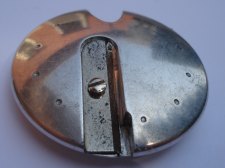
I started with a KUM Inox, which is representative of the type of sharpener I tend to like – compact, yet heavy enough to get a reasonable grip. But it has a very minimal sleeve for guiding the sharpener to the blade, and it didn’t seem to produce results that would be photo-worthy. I also considered that a Japanese sharpener would be appropriate, but the only ones I have are made by Tombow, and I thought they might subtly favour the precise dimensions of the Tombow pencil.

One sharpener I have that does work consistently well, perhaps because it does have more a significant sleeve for guiding the pencil, is the Faber-Castell UFO. The problem was that the blade was somewhat used, and it seemed unfair (though perhaps realistic) to use a dull blade. Enter the Laywine’s Special Order department, who were able to supply me with a replacement blade.
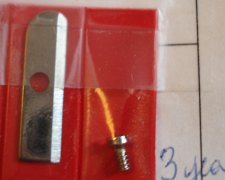
We are testing the pencil wood and lead, and the expectation is that the wood will be smoothly shaved away. We hope the point to be sharp and centered, but after taking pencil photos for a while, I’m quite aware that pencils rarely sharpen “perfectly”.
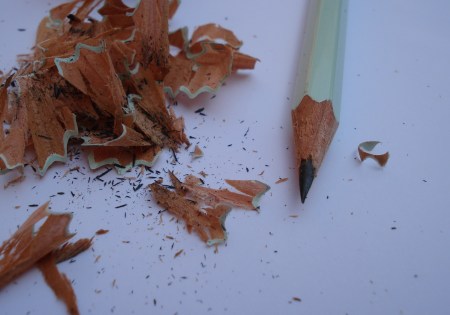
The wood – there are two standouts here – the Hi-uni and Mono 100 produce very red and rich cedar shavings. Is it the result of a different cedar variety or some sort of treatment?

The toughest sharpening was with the CDT pencil, while the Palomino was sharpened in an almost continuous spiral shaving. Yet the range was narrow, and all did well.
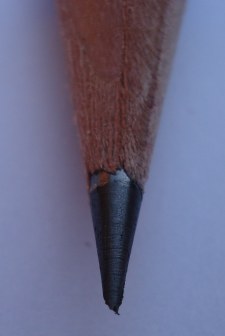
As to the point produced – the Hi-Uni is just perfect. I’ll draw on some past experience here. When it seems your hand is unsteady, or a sharpener blade is dull – try the same sharpener on a Hi-Uni, and it will usually produce a result that makes you wonder about what’s wrong with other pencils.
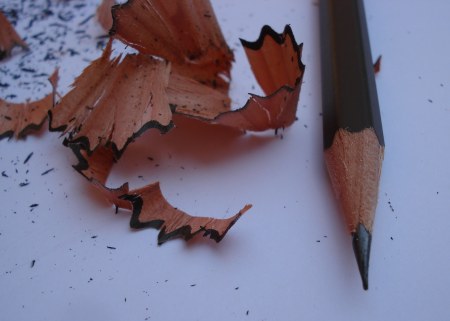
All the other pencils sharpened well, yet slightly excessive amounts of wood were removed. I’m giving them all the same score, an an exceptional ’10’ to the Hi-uni.
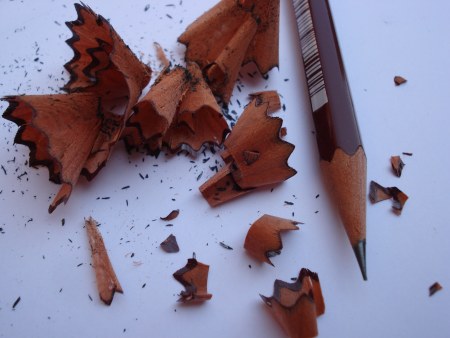
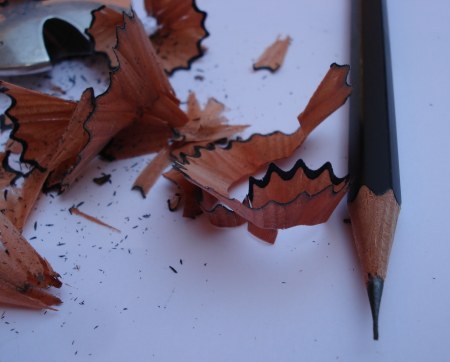
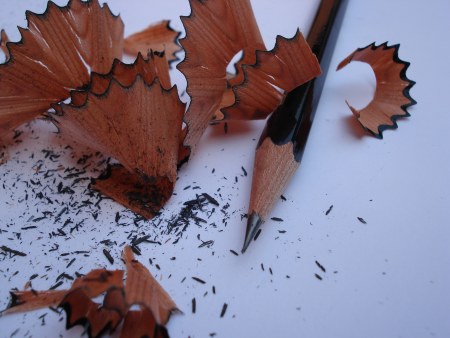
| Sharpening | |
| Pencil | Score |
| California Republic Palomino | 8 |
| Craft Design Technology item 17 | 8 |
| Kita Boshi Hit 9900 | 8 |
| Mitsubishi Hi-uni | 10 |
| Pentel Black Polymer 999 | 8 |
| Tombow Mono 100 | 8 |
To be continued

